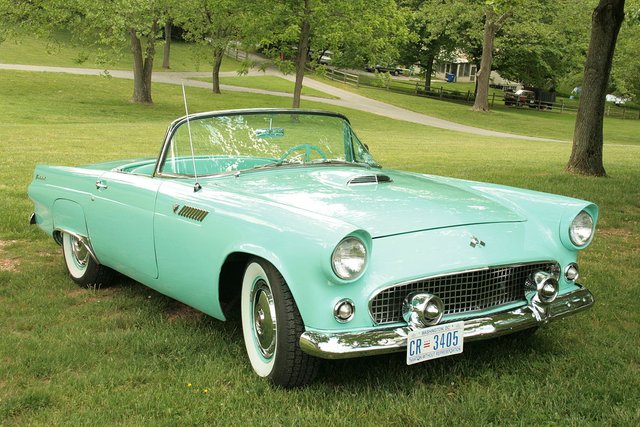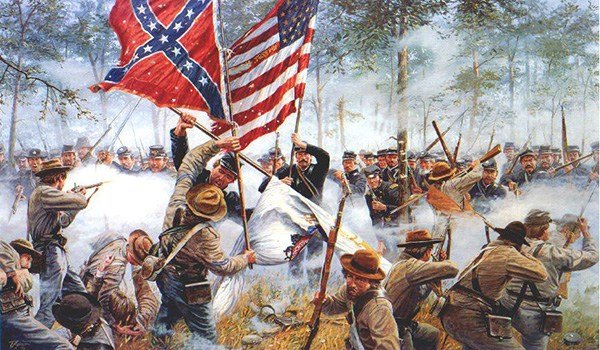1997
Hong Kong returned to China
At midnight on July 1, 1997, Hong Kong reverts back to Chinese rule in a ceremony attended by British Prime Minister Tony Blair, Prince Charles of Wales, Chinese President Jiang Zemin, and U.S. Secretary of State Madeleine Albright. A few thousand Hong Kongers protested the turnover, which was otherwise celebratory and peaceful.
In 1839, Britain invaded China to crush opposition to its interference in the country’s economic, social, and political affairs. One of Britain’s first acts of the war was to occupy Hong Kong, a sparsely inhabited island off the coast of southeast China. In 1841, China ceded the island to the British with the signing of the Convention of Chuenpi, and in 1842 the Treaty of Nanking was signed, formally ending the First Opium War.
Britain’s new colony flourished as an East-West trading center and as the commercial gateway and distribution center for southern China. In 1898, Britain was granted an additional 99 years of rule over Hong Kong under the Second Convention of Peking. In September 1984, after years of negotiations, the British and the Chinese signed a formal agreement approving the 1997 turnover of the island in exchange for a Chinese pledge to preserve Hong Kong’s capitalist system. On July 1, 1997, Hong Kong was peaceably handed over to China in a ceremony attended by numerous Chinese, British, and international dignitaries. The chief executive under the new Hong Kong government, Tung Chee Hwa, formulated a policy based on the concept of “one country, two systems,” thus preserving Hong Kong’s role as a principal capitalist center in Asia.
Automotive
2005
Last Ford Thunderbird produced

The last Thunderbird, Ford Motor Company’s iconic sports car, emerges from a Ford factory in Wixom, Michigan on this day in 2005.
Ford began its development of the Thunderbird in the years following World War II, during which American servicemen had the opportunity to observe sleek European sports cars. General Motors built the first American sports car: the Chevrolet Corvette, released in 1953. The undeniably sleek Corvette’s initial engine performance was relatively underwhelming, but it was gaining lots of attention from the press and public, and Ford was motivated to respond, rushing the Thunderbird to the market in 1955. The 1955 Thunderbird was an immediate hit, selling more than 14,000 that year (compared to just 700 Corvettes). The success of the Thunderbird led Chevrolet to continue production of (and improve upon) the Corvette, which soon became a tough competitor in the sports car market.
In addition to the powerful V-8 engine that Ford was known for, the Thunderbird boasted all the conveniences consumers had become accustomed to, including a removable hard convertible top, soundproofing and the accessories standard to most Ford cars. In 1958, to satisfy critics who thought the T-Bird was too small, Ford released a four-seater version with a roomier trunk and bucket seats. The Beach Boys elevated the Thunderbird to pop- culture-icon status in 1964 by including it in the lyrics of their hit single “Fun Fun Fun” (“she’ll have fun, fun, fun ’til her daddy takes the T-Bird away”). By that time, President John F. Kennedy had already included 50 Thunderbirds in his inaugural procession in 1961, and a T-Bird would also feature prominently in the 1973 film “American Graffiti.”
Thunderbird sales slowed during the 1990s, and Ford discontinued the Thunderbird in 1997. In 2002, however, in an attempt to capitalize on car buyers’ nostalgia, the company launched production of a retro T-Bird, a two-seater convertible that took some of its styling from the original classic. The luxury retailer Neiman Marcus offered an early special edition version in their 2000 Christmas catalog, priced at just under $42,000; their stock of 200 sold out in two hours and 15 minutes. Despite brisk early sales and good reviews, sales of the new Thunderbird couldn’t justify continued production, and Ford discontinued it again in mid-2005.
Civil War
1863
The Battle of Gettysburg begins

The largest military conflict in North American history begins this day when Union and Confederate forces collide at Gettysburg, Pennsylvania. The epic battle lasted three days and resulted in a retreat to Virginia by Robert E. Lee’s Army of Northern Virginia.
Two months prior to Gettysburg, Lee had dealt a stunning defeat to the Army of the Potomac at Chancellorsville, Virginia. He then made plans for a Northern invasion in order to relieve pressure on war-weary Virginia and to seize the initiative from the Yankees. His army, numbering about 80,000, began moving on June 3. The Army of the Potomac, commanded by Joseph Hooker and numbering just under 100,000, began moving shortly thereafter, staying between Lee and Washington, D.C. But on June 28, frustrated by the Lincoln administration’s restrictions on his autonomy as commander, Hooker resigned and was replaced by George G. Meade.
Meade took command of the Army of the Potomac as Lee’s army moved into Pennsylvania. On the morning of July 1, advance units of the forces came into contact with one another just outside of Gettysburg. The sound of battle attracted other units, and by noon the conflict was raging. During the first hours of battle, Union General John Reynolds was killed, and the Yankees found that they were outnumbered. The battle lines ran around the northwestern rim of Gettysburg. The Confederates applied pressure all along the Union front, and they slowly drove the Yankees through the town.
By evening, the Federal troops rallied on high ground on the southeastern edge of Gettysburg. As more troops arrived, Meade’s army formed a three-mile long, fishhook-shaped line running from Culp’s Hill on the right flank, along Cemetery Hill and Cemetery Ridge, to the base of Little Round Top. The Confederates held Gettysburg, and stretched along a six-mile arc around the Union position. Lee’s forces would continue to batter each end of the Union position, before launching the infamous Pickett’s Charge against the Union center on July 3.
Disaster
2002
Two planes collide over Germany
A Russian Tupolev 154 collides in midair with a Boeing 757 cargo plane over southern Germany on this day in 2002. The 69 passengers and crew on the Russian plane and the two-person cargo crew were all killed. The collision occurred even though each plane had TCAS (Traffic Collision Avoidance System) collision-avoidance equipment onboard and everything functioned correctly.
The Bashkirian Airlines plane was carrying 45 young students from Russia to a resort near Barcelona in Spain for a summer vacation. DHL International, the express delivery company, owned the cargo jet, which was headed from Bahrain to Brussels.
The planes were both on their planned flight paths that evening, flying with their lights off in the dark, according to regulation. About 45 seconds before the crash, with each plane traveling at 35,000 feet, the TCAS system in each plane indicated to the pilots that they should change their altitude. The Boeing cargo jet was to descend and the Tupolev was supposed to rise. However, a Swiss air-traffic controller ordered the Tupolev pilot to descend as well.
As directed, both planes lowered their altitudes at the same time; they crashed in mid-air over Ueberlingen, Germany, very close to the Swiss border. There were no survivors of the fiery crash, which caused debris to scatter over a 20-mile radius. Residents of the area heard the thunderous impact, but no one on the ground was killed.
Swiss aviation officials immediately began blaming the Russian pilots for the tragedy, but the evidence soon showed their charges to be baseless. The pilots were experienced and the plane and its collision-avoidance system were in fine working order. Instead, it was the Swiss air-traffic system that appeared to be faulty. Their own collision-avoidance system was not in operation and they had only one controller on duty at the time.
General Interest
1867
Canadian Independence Day
The autonomous Dominion of Canada, a confederation of Nova Scotia, New Brunswick, and the future provinces of Ontario and Quebec, is officially recognized by Great Britain with the passage of the British North America Act.
During the 19th century, colonial dependence gave way to increasing autonomy for a growing Canada. In 1841, Upper and Lower Canada–now known as Ontario and Quebec–were made a single province by the Act of Union. In the 1860s, a movement for a greater Canadian federation grew out of the need for a common defense, the desire for a national railroad system, and the necessity of finding a solution to the problem of French and British conflict. When the Maritime provinces, which sought union among themselves, called a conference in 1864, delegates from the other provinces of Canada attended. Later in the year, another conference was held in Quebec, and in 1866 Canadian representatives traveled to London to meet with the British government.
On July 1, 1867, with passage of the British North America Act, the Dominion of Canada was officially established as a self-governing entity within the British Empire. Two years later, Canada acquired the vast possessions of the Hudson’s Bay Company, and within a decade the provinces of Manitoba and Prince Edward Island had joined the Canadian federation. In 1885, the Canadian Pacific Railway was completed, making mass settlement across the vast territory of Canada possible.